Written by Grace Kline (Winner of the 2022 Calf-Tel Content Contest)
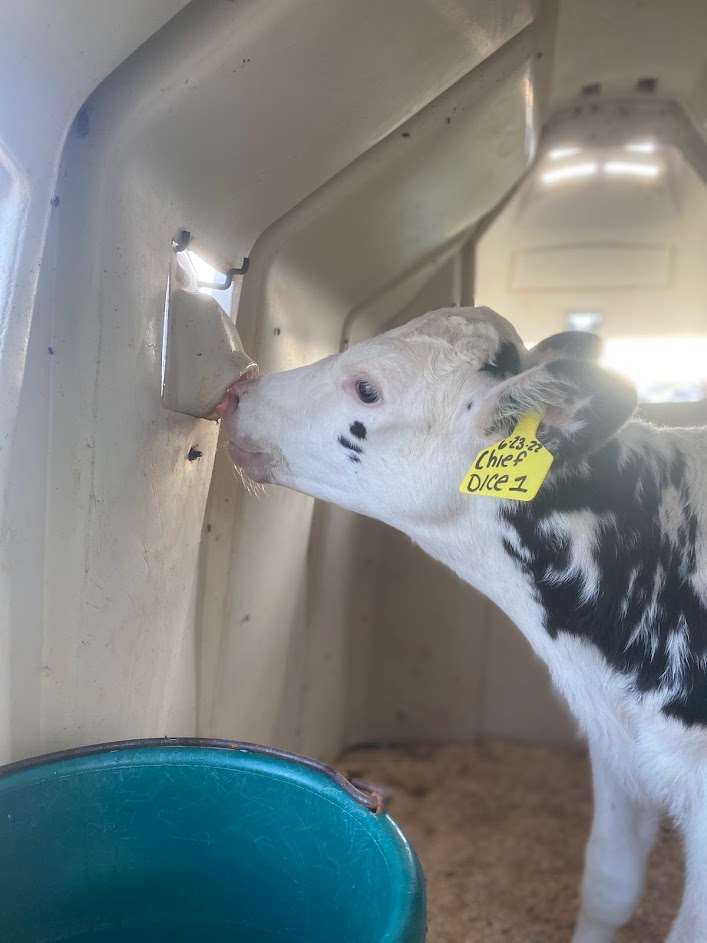
As a dairy producer, you have different options for feeding milk to your calves. These options are pasteurized whole milk, acidified milk, and milk replacer. While they all have their own benefits and require different management styles, I want to discuss the management of milk replacer powder. We will touch on how to read the milk replacer label, what those numbers mean, and how to calculate pounds of solids.
Before we begin, one important phrase in calf raising is Average Daily Gain (ADG). Although self-explanatory, ADG refers to how much weight a calf should gain in a day to reach proper weaning weight. The recommended amount of ADG is about 0.8-1.3 lbs./day (Van Saun, 2022). This will vary between different dairy breeds.
When researching milk replacers, you may see them displayed as a 22:20, 20:20, or even 28:20. There are various other combinations, which are decided upon with the producer’s goals in mind.
These numbers are a protein-fat ratio, displayed as: Protein : Fat
Milk replacer formulas vary with the producer’s goals, budget, and timeline. On average, the most common replacers are between 20%-22% protein and 20% fat. Some higher-protein replacers, such as a 26:20 or higher, can be used as part of an accelerated feeding program, to grow calves faster in a shorter amount of time (Van Saun, 2022). When feeding high protein replacers, it is imperative that calves always have fresh water in front of them. While this is a good rule of thumb regardless, calves that are fed higher protein will use more water to digest after each feeding. In addition, calves that do not have access to free choice water will consume less starter grain, thus have a lower ADG (Erikson, et al., 2020).
All milk replacer bags will come with a tag. That tag will have a “Guaranteed Analysis” describing the fat and protein ratios, along with a handful of other vitamins and minerals. That will be followed by an ingredients list, and some general recommendations/instructions.
Here is an example of the Guaranteed Analysis.
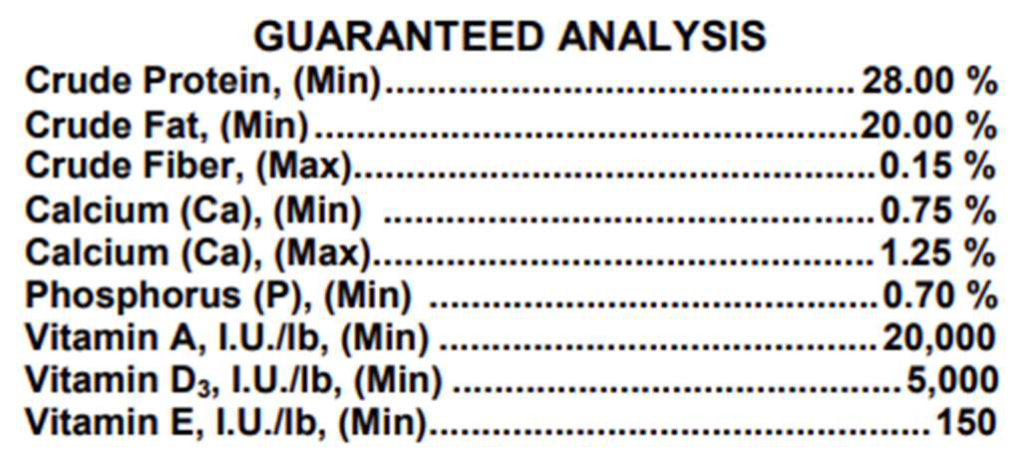
You can see at the top that the example from Land O Lakes is a 28:20 replacer. This tag also comes with mixing and feeding instructions.
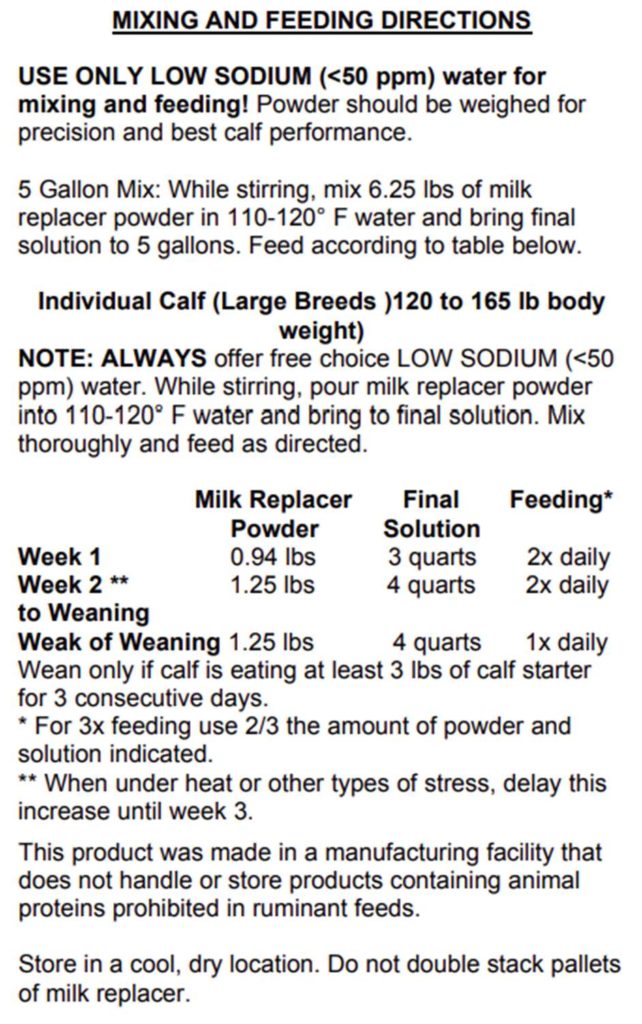
In the directions, you will find one other important
thing to note- water temperature. These directions
specify mixing between 110-120°F. The milk
replacer will mix more thoroughly in hot water and
should be stirred until there are no clumps or
floating bits. Furthermore, it is important to feed
calves before the solution is below their body
temperature. A good range is 105-110°F. A good
way to ensure every calf is receiving warm enough
milk is to take the temperature while it is mixing
when you feed the first calf and the last calf. This
will allow you to tell how much heat you lose from
mixing to final delivery. If the milk is falling below
105°F, you may need to either mix and deliver in
smaller batches or mix at a higher temperature to
help the heat last longer.
Weighing milk replacer ensures that a calf receives
the same percentage of solids at every feeding.
There are different scales that you can use. A
hanging scale or electric scale can let you know how much a scoop will hold, and you can then adjust accordingly.
For example, if you use the milk replacer cup that comes in the bag, the tag may tell you it holds 12 ounces of powder. Depending on how packed or loose the milk replacer is, you may only have 10 ounces or even an excess of 14 ounces in your 12-ounce scoop. This mistake is important to avoid and to maintain consistency.
When we talk about the ratio of water to replacer, we must realize that the “final solution” is the combination of water and replacer together. Notice at the top, to mix 5 gallons of milk, it is instructed to add the powder while stirring. This will bring the final product to 5 gallons, not 5 gallons of water plus 6.25 lbs. of replacer powder. This is important because we can drastically change the percent of total solids. Using the formula from Michigan State University, let’s check the difference.
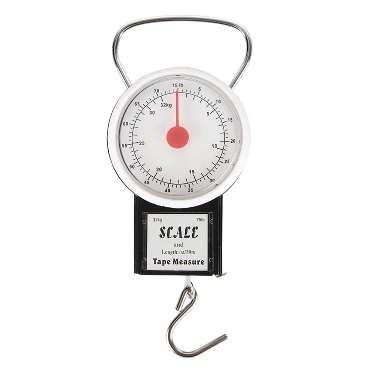
Percent Total Solids = pounds of powder / pounds of solution (Cullens, 2018)
Following the directions for week 1 in the above example, the formula works like this:
(.94 lbs. of powder) / (.75 gallon * 8.6lb/gallon) = 14.6% solids.
Now, if we were to take the weight of 3 quarts and combine it with the weight of the powder, we have a weight of 7.39. divided by (.75 gallon * 8.6lb/gallon), we are down to 12.7% solids. This nearly 2% difference will directly affect your average daily gain. If your calves are consuming fewer solids per feeding, they will not be receiving enough energy to grow to their full potential. Ensuring that your calves are fed properly will give them the ability to fight off potential disease and ease the transition to weaning. Proper handling of milk replacer will help you achieve the goals within your calf herd and give your calves a good foundation to become productive cows.
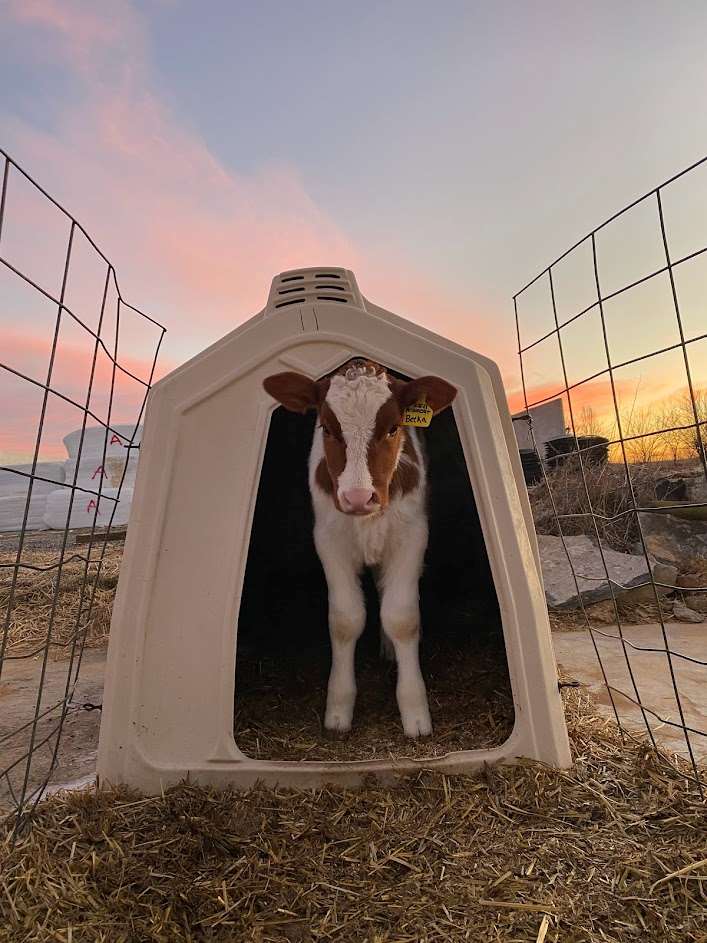
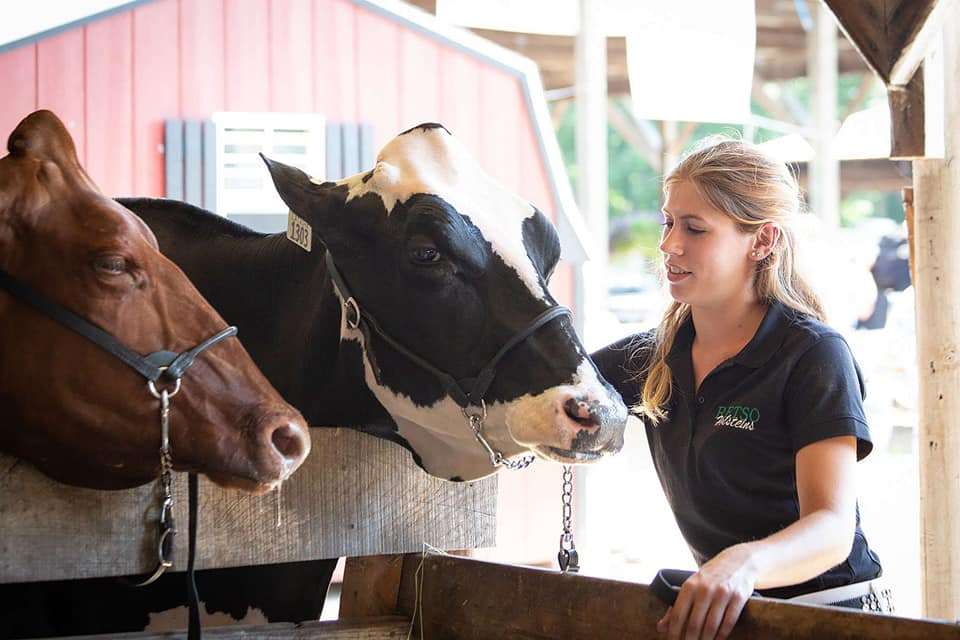
Grace Kline assists in the operation of Diamond Valley Dairy in Myerstown, Pennsylvania, with her husband and brothersin- law. There, she cares for calves and heifers that are born both naturally and as a result of embryo transfer from deep-pedigreed show cattle. Grace has been caring for calves since her first job at 12 years old and has worked on four different farms, including an internship at Budjon Farms where she specialized in calves and show heifers.
Cullens, Faith. “Total Solids in Milk Replacer – It Matters!” MSU Extension, 21 Mar. 2018,
https://www.canr.msu.edu/news/total_solids_in_milk_replacer_it_matters#:~:text=In%20o
rder%20to%20calculate%20total,to%20get%20a%20final%20weight.
Erickson, Peter S., and Kenneth F. Kalscheur. “Nutrition and Feeding of Dairy Cattle.” Edited by
Fuller W. Bazer et al., Animal Agriculture, U.S. National Library of Medicine, 24 Jan.
2020,
https://www.ncbi.nlm.nih.gov/pmc/articles/PMC7153313/#:~:text=The%20typical%20mil
k%20replacer%20contains,automatic%20feeders%20as%20described%20above.
Land O Lakes, Land O Lakes. “Land O Lakes® Cow’s Match® Milk Replacer – Mkcoop.com.”
MK Copp, https://www.mkcoop.com/getattachment/Feed/Cattle/lol-cowsmatch.
pdf?lang=en-US.
Van Saun, Robert J. “Feeding Young Dairy Calves – Management and Nutrition.” Merck
Veterinary Manual, Merck Veterinary Manual, 10 Oct. 2022,
https://www.merckvetmanual.com/management-and-nutrition/nutrition-dairycattle/
feeding-young-dairy-calves.
